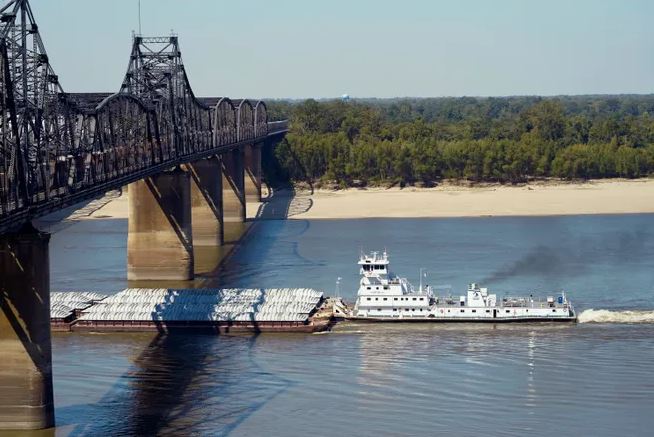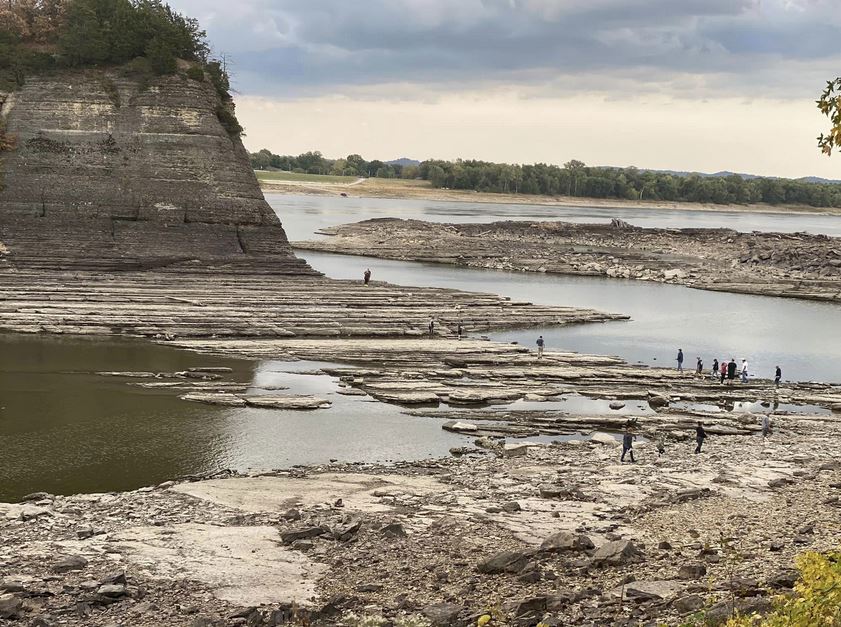Mississippi River Water Levels Plummet: A Looming Crisis in the United States

Unprecedented drought conditions in the United States have led to a significant drop in Mississippi River water levels for the second consecutive year, impacting local resources and agriculture. (Photo: clarionledger)
Worsening Crisis: Ongoing Drought Takes a Heavy Toll on Mississippi River Water Levels
According to the source, unprecedented drought conditions in certain areas of the United States have caused a concerning drop in Mississippi River water levels for the second consecutive year. This troubling situation has made unique rock formations accessible on foot and is negatively impacting the region’s water resources and agriculture. To combat these challenges authorities are taking measures to expand levees in Louisiana aiming to prevent saltwater intrusion into the drinking water of New Orleans while farmers in the US Midwest express deep concern about the dwindling Mississippi River water levels.
As reported by the National Oceanic and Atmospheric Administration (NOAA) and the US Geological Survey (USGS), a critical 400-mile stretch of the river now grapples with exceptionally low Mississippi River water levels.
Colin Wellenkamp the executive director of the Mississippi River Cities and Towns Initiative, underscores the severity of the ongoing drought, noting that the river has yet to fully recover from last fall’s drought conditions. The gravity of the situation is further compounded by the record-breaking heat waves experienced in both Louisiana and Mississippi intensifying the drought’s impact.
READ ALSO: Strongest Atlantic Hurricanes Intensifying Faster Due to Climate Change, New Study Reveals
Unprecedented Heatwave Leads to Crisis in Mississippi River Water Levels
In the US Midwest, residents are grappling with exceptionally high temperatures, leading to a unique situation where structures usually surrounded by water are now accessible on foot. The river’s gauges have registered distressingly low Mississippi River water levels, with no immediate signs of improvement. This situation echoes the events of October the previous year when tourists were able to walk to Tower Rock, a renowned attraction along the river that had rarely been reachable for over a decade.
This weather pattern is noteworthy as it aligns with the broader global trend of rising temperatures linked to greenhouse gas emissions, as documented by NASA. Moreover, the El Niño phenomenon, characterized by elevated sea surface temperatures, carries significant consequences, potentially bringing colder, wetter conditions to the US Southwest and drought to regions such as Australia and Indonesia.
These climate-related challenges underscore the importance of collective efforts from both communities and authorities to safeguard water security and ensure the sustainable future of agriculture during these erratic Mississippi River water levels.
























